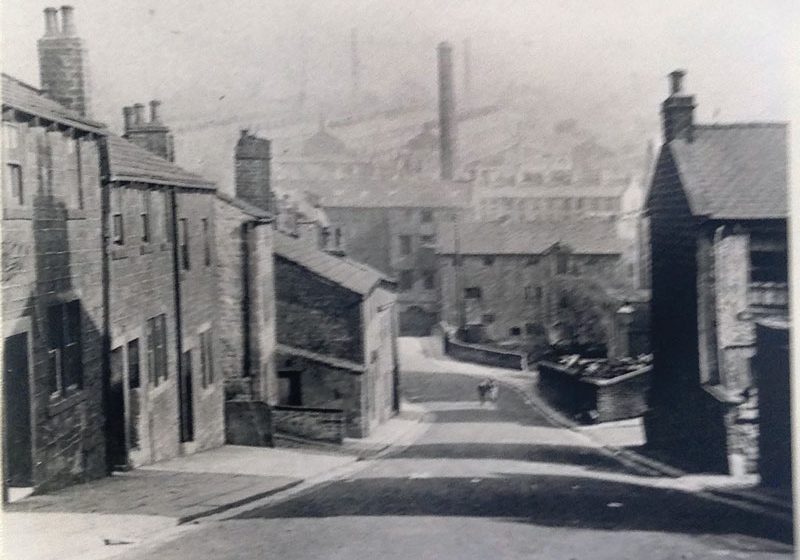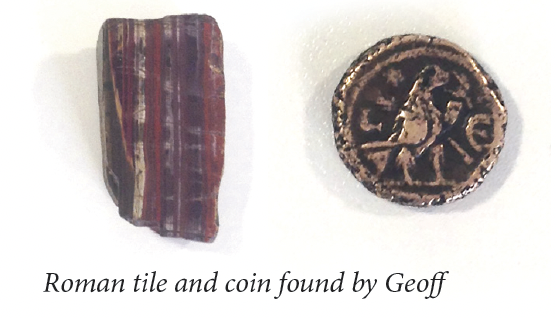
Geoff Goes ‘Off Up Lenches’
by Sophia Smith
Local historian Geoff Crambie chats to Sophia Smith about a very important part of Colne’s history.
If you’re from the Lancashire town of Colne, you’ll know what folk mean when they say, ‘we’re off up Lenches’. Once a bustling area, it‘s now much quieter.
Lenches Road
Lenches was a thriving place, all part of Waterside, hundreds of people used to live there. Today I’d say less than 50 people live there because it’s altered that much, its where the Admiral Lord Rodney pub is,” said Geoff. “Right at the bottom of Lenches Road was Garden Street, it ran off over the beck in Colne water. My mother-in-law lived there in the 1920s and she said it was like going back in time because the cottages were from the 1700s. You can still see where the outside toilets were! There were no flushing toilets back in the old days, all the waste went in the beck!”
“Lenches Road was known as the birthplace of three famous people.”
On the corner, was an old-fashioned shop ran by a chap called Geoff Kennedy, Geoff would buy many penny ice lollies there as a kid. The son of the shop owner became a brilliant cricketer who played for Lancashire, Andrew Kennedy.
Lenches Road was known as the birthplace of three famous people. “First, the birth of Dr Edmondson Spencer, he was one of the first scientists to use morphine! Secondly, Peter Birtwistle, he emigrated to Canada and died in 1927, leaving his fortune to the town, including a diamond ring in the trust of Colne Town Council and over 100 houses were built from his money. The third one, Tom Higgin, was the very last saddler in Colne.”
Beside the road was Lenches Court, Lenches Yard and Lenches Fold, every single one of these places has disappeared. The top storey windows of the little cottages surrounding the court were huge, this was so the light could come in so people could see the handlooms, the windows down below were always small.
Up the road, you would have found Providence Church, it was bulldozed down in the 70s just like many significant places in Lenches. More streets that had been demolished were Beech Street, Cedar Street, Deal Street, Maple Street and Spruce Street. Geoff ran up when he knew they were being knocked down. “All the pot signs had been smashed. So, I took around 40 pieces of the street signs, they’re that small you can’t even put them together!”
We’re going up the hill again, there was a large house on the corner called the Nook. At nighttime, the people of Colne said ‘The Hound of the Baskervilles’ used to go out at night and attack sheep in the Victorian era. No trace was found, but it’s just an old wives’ tale.
“Further up the road, you would have come to some terraced houses, Hartleys Terrace and Greenwoods Terrace. The claim to fame on Greenwoods Terrace is that the son of a cloth-looker in Colne’s booming textile industry was born there, Luther Greenwood,” said Geoff.
Destined for a life in music, Luther won many prizes for his musical talents. Each year the Municipal Hall holds a festival in memory of Luther Greenwood.
Prospect Farm
“Up near the top of Lenches was Prospect Farm, there used to be a chap there called Long Joe Knowles, he was a rag-and-bone man,” grins Geoff. “Throughout the 50s up to the 70s you could hear him a mile off shouting. If you had any scrap metal to take to him, he would give you a goldfish. He would have around two dozen goldfish on the back of his horse and cart for people. There was a field up at the farm where he would take the horses and the items he had collected throughout the day. He had a big sign up there that said: ‘KEEP OUT, MEANS YOU!’” laughed Geoff. “He was a real character and really tall too, about 6’6”! The last rag-and-bone man died out in the 70s. There used to be seven in Colne!”
“The Roman general Agricola won all of Lancashire and founded Colne in AD 79”
Castercliff

Geoff holding the roman coin and tile
When the Romans came over, the Roman general Agricola won all of Lancashire and founded Colne in AD 79, the same time as other places such as Manchester and Warrington.
In 1951 Geoff attended Lord Street Primary School. “I would have been eight years old. One of my teachers, Mr Melling, went to Pilkingtons, an ironmongers on Albert Road in Colne. He bought everyone in the class a little spade, it was a bright sunny day and we went up to visit Castercliff to dig. I was drinking some pop, and all of a sudden, I heard Mr Melling yell ‘YEEEES!’. He’d found two Roman coins, solid copper and they were nearly 2000 years old!” recalled Geoff. Mr Melling had the coin sent off to Manchester University who confirmed it was a genuine Roman coin from AD 120.

“At the end of the school year we got our marks and I came top in history. Mr Melling gave me one of the coins because I had full marks. He let me keep it, I’ve had it for 70 years! He gave the other one to the school.”
Geoff caught the Castercliff bug and began going up to visit when he could. In 1957, he made an important discovery. “I was with a pal of mine, Roger Cookson, we had a big spade this time, not little hand trowels! We were digging and we found little bits of pottery… but then we came across a tile. I took it back to Primet High School, to my science teacher, who sent it off to Leeds University as there was an expert there. He confirmed it was a genuine Roman handmade tile from around AD 140 that came from a Roman building!”
In 2001, Geoff decided to take his grandson, Nathan, up to Castercliff. “We went up on a lovely summer’s day. He took a metal detector with him, and there were sheep watching him the whole time! We took a little throw away camera up too, and we found some pottery which Nathan still has. But… we found something and thought what the heck is it? A pal of mine who was teaching at Newcastle University had it looked at… and it was part of a Roman brick.
The Roman Odyssey
In 1976, when Geoff was 33 years old, he created a walk, ‘The Roman Odyssey’. The walk would start at the bottom of Lenches at the Waterside bridge and slowly go up the hill. “I’m going to organise it again, everyone loved it and, if I revitalise it, everyone can hear about the Romans in Colne. It’s like time travelling!” beamed Geoff.




